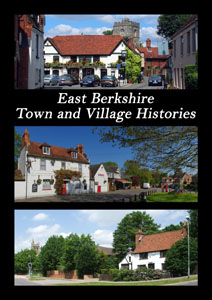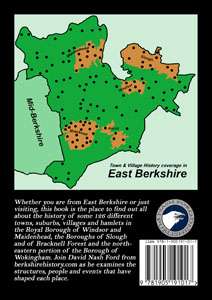 |
 |
||||||||
|
|
Dedworth Medieval Manors
Dedworth was first established as a small Anglo-Saxon settlement: Dydda’s Farm. Dydda was the name of the father of St Frideswide, who was a minor king in the Oxfordshire/Berkshire area in the 7th century. It is unclear if this was the same man, but perhaps he had a palace at Old Windsor and this was an outlying farm providing his court with agricultural produce. By the reign of King Edward the Confessor, the monarch of all England was certainly living at Old Windsor and the small manor of Dedworth had become the home of important royal officials who liked to be near the King. Hugh the Chamberlain was then in residence. After William the Conqueror took power, Dedworth was given to the royal chaplain (and possibly also the royal physician), Albert the Clerk (aka Albert Lothingaria). This man was from Lorraine and had served King Edward but managed to survive the regime change. At the time of the Domesday Survey (1086), Dedworth only covered one hide and was home to just four villeins (tenant farmers) and one bordar (cottage-dweller) and their families. They had two plough teams to work the land and there was enough woodland for five pigs and twenty acres of meadow for grazing down by the River. The manor soon became part of the parish of Clewer and was divided in two. A now-covered irregular quadrangular moat in Wolf Lane may be all that remains of the manor house of Dedworth Maunsell, named after a branch of the famous Welsh family usually spelt Mansel. The family was certainly there in the early 14th century, and probably before, since the chaplain at Losfield Chapel on St Leonard's Hill in the 1210s was named Robert Mansel. The other manor house in the area, Dedworth Loring, may possibly have been located further north where a large medieval hearth was uncovered by excavation in the aptly named Knight’s Close. It was named after the De Loring (or Loryng) family whose name means ‘of Lorraine,’ so they were almost certainly descended from Albert the Clerk. Their main country seat was at Chalgrave in Bedfordshire, but they probably stayed in Dedworth when attending the Royal Court. Sir Peter de Loring is recorded there in the early 13th century. His grandson, Sir Nigel, was Chamberlain to the Black Prince and became a founding member of the Order of the Garter. Centuries later, Sir Arthur Conan Doyle made him the titular character in his novel, ‘Sir Nigel’ (and he previously appeared in the ‘White Company’). However, in the late 1340s, both manors were sold up to Sir John Brocas of the adjoining manor of Clewer Brocas. The manor houses may have provided much needed accommodation for younger members of the Brocas family. In 1360, a John de Loring, became a Canon of Windsor, so presumably there were younger branches of this family still living in the area too. There are streets in Dedworth named after both the Mansel and Loring families. Several others are named after the Windsor Martyrs who were burnt to death for their Protestant beliefs at the end of King Henry VIII’s reign. What their connection with Dedworth was is unclear. They were all Windsor townsmen at a time when Dedworth was a small hamlet of less than ten houses. The small community seems to have had a distinct sense of independence from both Clewer and Windsor. In 1700, they refused to pay poor (or church) rates due to Windsor parish. The situation continued for three years until the Dedworth inhabitants were taken to the Assize Court in Wallingford and forced to pay up. By 1800, there were still only thirteen dwellings in Dedworth, but they housed some seventy-five people, with around six people in each house. The population grew steadily throughout Queen Victoria’s reign and was just over 400 by the time of her death (1901). Dedworth was given its own church in 1863 – All Saints’ – erected by GF Bodley for the Tudor family. It was an Arts-and-Crafts brick structure with a small bellcote in the style of a 14th century building. It was torn down after suffering from subsidence and replaced by the current rather imposing modern building with open tower (now with a rather interesting sculpture) in 1971. Fortunately, the glorious Pre-Raphaelite Morris windows were saved and the new church sports stained-glass by Morris himself, Burne-Jones, Rossetti and Ford Madox Brown. Three years after the construction of the first church, Windsor Racecourse was built at Dedworth. It is one of only two figure-of-eight flat race courses in the Country. The original Windsor Races had been instigated by King Charles II at Datchet Mead in the Home Park, down by the Thames opposite Datchet. By 1930, Dedworth had more-or-less joined up with Clewer and Windsor, although it was still a small ribbon development with farms and open fields. The eastern region of the parish was filled in during the 1950s and spread westward in the 60s and 70s to form the large expanse of housing that we see today. Read more history of Dedworth in David Nash Ford's book, 'East Berkshire Town and Village Histories'. Click to Order direct from the Author.
|
||||||||
| © Nash Ford Publishing 2001; Revised 2020. All Rights Reserved. | |||||||||





